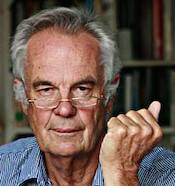By Jonathan Power*
LUND, Sweden | 26 August 2025 (IDN) — Everything gets said, nothing gets done. When President Donald Trump met with President Vladimir Putin in Alaska, we were promised all sorts of goodies — progress in reconciliation in Ukraine and Syria, and, not least, nuclear disarmament. If there is progress behind the scenes, it’s not noticeable to the naked eye.

People talk about Trump being in Putin’s pocket, yet when, soon after Trump became president the first time, Putin suggested major cuts in nuclear weapons, Trump turned him down. This would have been a fantastic way to start his presidency. He could have surpassed Barack Obama’s achievement of reducing the arsenal to 1,550 warheads. In nearly everything else, he wants to destroy Obama’s legacy or minimise it. This would have been a viable approach.
This doesn’t sound to me like Putin, the supposed puppet master, was pulling the strings on his marionette, Trump.
The Cost of Inaction
Let that be; perhaps we’ll uncover the truth one day. Meanwhile, the massive stockpile remains, despite enormous cuts (80%) since Cold War days. The US is committed to a $1.7 trillion improvement over 30 years in its nuclear arsenal, the price Obama had to pay to get the new treaty with Russia approved in the Senate. (It’s called START.)
Meanwhile, many rockets remain on hair-trigger alert. Many military personnel worry that under pressure, Trump might authorise their use, and that a military unit accustomed to obeying orders would initiate a launch.
“A demented commander-in-chief could start a conflagration that no one could forestall, veto or stop”, says the Arms Control Association. Added to that are false warnings caused by birds, computer malfunctions, etc. There’s also the danger of rogue submarine commanders who can fire their nuclear missiles without a confirming radio signal since they have to surface to receive one. In wartime, they might not be able to surface safely.
Six Minutes to Midnight
Once a Russian attack is launched (or a US attack on Russia), the presidents have only six minutes to decide whether retaliation is to be implemented. Zbigniew Brzezinski, the former National Security Advisor, has talked about how he was awakened in the night and informed by the military that an attack might be on its way. He waited three minutes before he had to phone President Jimmy Carter, who was also asleep. Fortunately, at that moment, a second call came in, saying it had been a false alarm.
In a remarkable statement, a group of former intelligence chiefs, according to an op-ed article in The New York Times, suggested that the military should think twice before following Trump’s orders in a crisis.
A New Arms Race
The arms race continues. Both sides are developing hypersonic missiles, new missile defence capabilities, offensive cyber weapons and anti-satellite and counter-space weapons. Any of these could disrupt the fragile equilibrium of the Cold War era, when it was clear that neither side could gain an advantage over the other.
Putin is still swallowing the bitter pill of President George W Bush’s decision to pull out of the 1972 Anti-Ballistic Missile Treaty, allowing it to press ahead with a land-based missile system that Russia views as a direct, deliberate threat.
The Peace That Masks the Risk
For the last eight decades, since the end of World War II, the world has been living in its most peaceful years. Yes, there are many civil wars, but interstate wars have fallen precipitously; territorial conquest has nearly disappeared. Before 1928, the average state could expect to be conquered about once every lifetime. Now the average country will be subject to conquest roughly once or twice in a millennium. So writes Oona Hathaway and Scott Shapiro in their book, “The Internationalists”.
Strategists say nuclear weapons help keep the peace. Maybe they do — until something goes wrong. We can’t afford to live with a gamble like that, especially so when Trump once again has his finger on the button.
*Jonathan Power was a member of the International Commission on Common Security, chaired by Prime Minister Olaf Palme of Sweden. The subject was nuclear weapons. The report was reported on the front page of The New York Times. The same day, he wrote for the Times and the International Herald Tribune an op-ed piece. [IDN-InDepthNews]
Image source: Daily Mirror, Sri Lanka.
Copyright © 2025 Jonathan Power
Visit www.jonathanpowerjournalist.com


